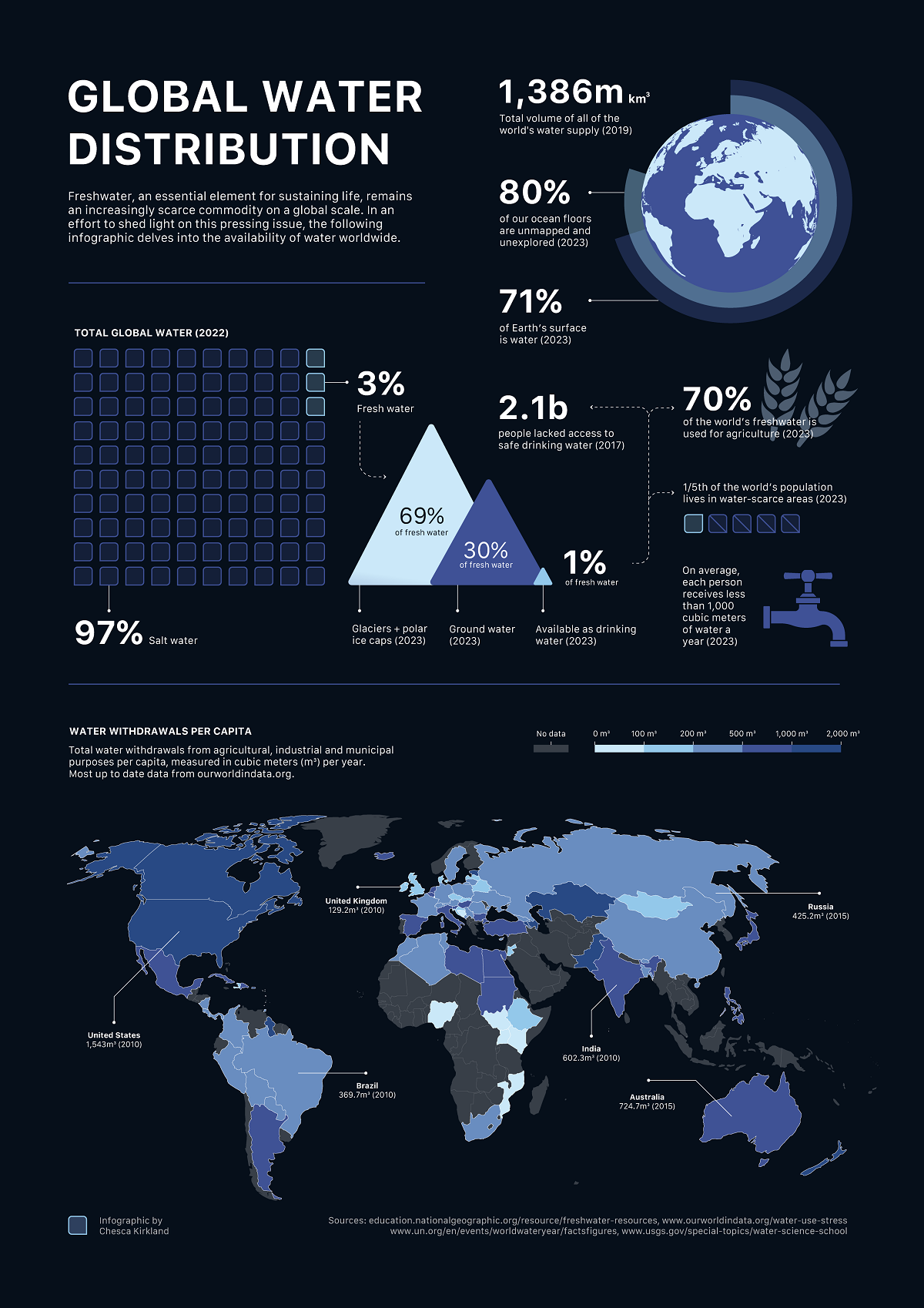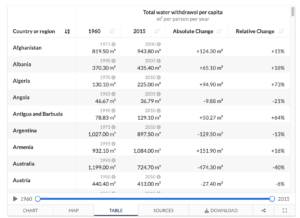BLOG
July 23rd, 2023
Courtesy of the Visual Capitalist, an effective graphical look at the global supply of water:

As the world’s population and its agricultural needs have grown, so too has the demand for water, putting the world’s supply of water under the microscope.
A century ago, freshwater consumption was six times lower than in modern times. This increase in demand and usage has resulted in rising stress on freshwater resources and further depletion of reservoirs.
This graphic by Chesca Kirkland uses insights from Our World in Data to break down water supply and also withdrawals per capita. The latter measures the quantity of water taken from both groundwater and freshwater sources for agricultural, industrial, or domestic use.
How Much Water Do We Have?
Many people know that more than 70% of the Earth’s surface is water. That’s 326 million trillion gallons of water, yet humanity still faces a tight supply. Why is that?
It’s because 97% of this water is saline and unfit for consumption. Of the remaining 3% of freshwater, about two-thirds are locked away in the form of snow, glaciers, and polar ice caps. Meanwhile, just under a third of freshwater is found in fast-depleting groundwater resources.
That leaves just 1% of global freshwater as “easily” sourced supply from rainfall as well as freshwater reservoirs including rivers and lakes.
Per Capita Water Withdrawals
Any look at a world map of rivers and lakes will reveal that fresh water distribution is highly uneven across different regions of the world.
Yet developed and developing countries alike require a lot of water for both commercial and personal use. Agriculture use alone accounts for an estimated 70% of the world’s available freshwater.
Below we can see how water withdrawals per capita have grown over the past decades, using the latest available data from each.
Many of the countries with the largest water withdrawals per capita are located in the arid deserts of Central Asia, including top-ranked Turkmenistan at 5,753 cubic meters of annual water withdrawals per person in 2005.
And for developing countries with high water usage, from Turkmenistan to Guyana, most of their water withdrawals are for agriculture. For example, an estimated 95% of available water in Turkmenistan goes towards agriculture.
Developed nations like Finland, New Zealand and the U.S. also withdraw tons of water, at more than 1,000 cubic meters annually per person, but their uses are notably different. In the United States, for example, 41% of water withdrawals in 2015 went to thermoelectric power generation, while 37% went towards irrigation and livestock. For Finland, on the other hand, 80% of water was used for industrial production.
Most of the countries with lower water withdrawals per capita, meanwhile, are concentrated in Africa. They include very populated countries, such as Nigeria and Kenya, which both withdrew around 75 cubic meters of water per person in 2015 and 2010 respectively. This also highlights the continent’s water accessibility and infrastructure issues.
Bridging the Water Inequity Gap
Over the years, various initiatives have emerged to mitigate the world’s water inequality gap.
Efforts include promoting water conservation practices, investing in efficient irrigation systems, and enhancing water infrastructure in regions most affected by scarcity.
Some nations in arid climates with coastal access, such as Saudi Arabia, are also converting ocean salt water to fresh water through desalination plants.


